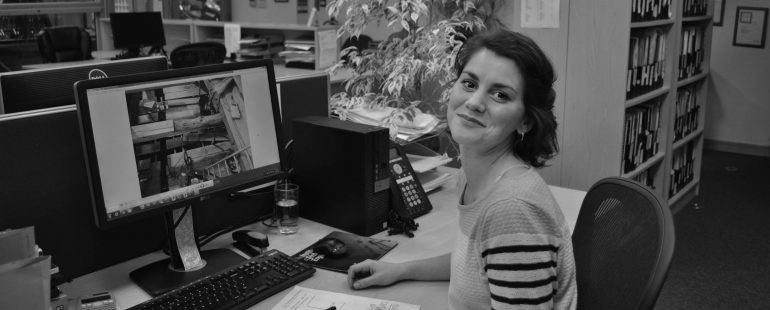Congratulations Lucy
Lucy Newport
CEng MIStructE Engineer Accredited In Conservation
One of The Morton Partnership's Senior Chartered Structural Engineer in our London office, recently working on architecturally led projects up to £40 million. Lucy has a passion for historic buildings and over the last few years has begun specialising in conservation, with experience working on a number of Grade I and II Listed buildings and scheduled ancient monuments.
Recently Lucy was accepted onto the Conservation Accreditation Register for Engineers. This sets her apart as an expert in Conservation and TMP couldn't be prouder.
The CARE scheme uses the International Council on Monuments and Sites (ICOMOS) Guidelines for Education and Training in the Conservation of Monuments, Ensembles and Sites as the basis for assessment of candidate's experience.
The accreditation is recognised by Historic England, Historic Scotland, Cadw , Department for Communities - Historic Environment Division (DfC-HED) and works in partnership with professional bodies including:
Architects Accredited in Building Conservation (AABC)
Royal Institution of British Architects Conservation Register (RIBA)
The Royal Institution of Chartered Surveyors (RICS) Conservation Forum
Royal Incorporation of Architects in Scotland
We spoke to Lucy to find out a bit more about the process and why it is important to her
My first few years after graduation were spent working on architecturally led refurbishments throughout London, and although eager to learn, I quickly became disheartened at the majority of projects attempting basement extensions and retrofits requiring very complex structural schemes in exchange for small gains of often awkward spaces; they cost an awful lot of money, generated huge waste and let’s not start on the carbon emissions.
I began working on listed and scheduled sites whilst at Price & Myers and found my niche in playing the detective; investigating their history to advise how sites could be developed for modern use without harming their significance. This approach in regenerating historical places, working with the buildings rather than against them, helped me to see a future in structural engineering that I was excited to be a part of.
My interest in historic buildings has since developed into a passion as I have learnt more about traditional skills, materials and techniques, from hands on courses with The Society for the Protection of Ancient Buildings and undertaking an MSc in the Conservation of Historic Buildings at Bath University. I joined The Modern Partnership a year ago as they are a leading engineering firm in the conservation and repair of historic buildings; it is a lovely practice caring for some of the most important heritage sites in the country. I’m currently leading repair projects for ancient scheduled monuments and Grade I Listed buildings including Canterbury Cathedral, Leicester’s Abbey Precinct and Dover’s Maison Dieu. I’ve found there to be far more collaboration between the client, design team, contractor and craftspeople in conservation, as everyone is keen for quality and a long-lasting result. All parties bring a different perspective and varied experience to the work, and you are constantly questioning and learning from one another.
It is often highlighted to me that there are very few conservation engineers in the UK, particularly in comparison to the number of specialist architects. There is an inadequacy in the awareness brought to historical buildings in undergraduate civil and structural engineering courses; if we are only taught to design in steel and concrete, then that’s all engineers will feel comfortable doing. Unfortunately, the focus on ‘innovation’ has meant that we have lost the knowledge of using traditional materials, and consequently harmed many historic buildings with the application of modern alternatives.
The Conservation Accreditation Register for Engineers (CARE), is jointly run by the Institute of Civil Engineers and the Institute of Structural Engineers to promote conservation in engineering and enable clients to find engineers with appropriate experience. To apply, you must be chartered with either institute and be able to show your experience in, and philosophical approach towards, historical buildings and sites through the use of five case studies, which will be followed up by an interview with two current members. There are now just under 70 engineers on the register, and I am one of 13 women.
We are now at a point where we can no longer ignore the role that the construction industry has to play in climate change, particularly the unhealthy, disposable attitude we have to buildings. Understanding traditional materials is not only necessary in looking after our existing building stock but provides low carbon alternatives that we must look to for future building if any real change is to happen. Hopefully the platform of CARE will continue growing to help promote these alternative areas of engineering and construction, including at university level, to encourage more people into a career which focuses on looking after and carefully managing our natural and manmade environment.
Well done Lucy!
For More information please visit:
HistoricEngland.org.uk
ICE.org.uk




